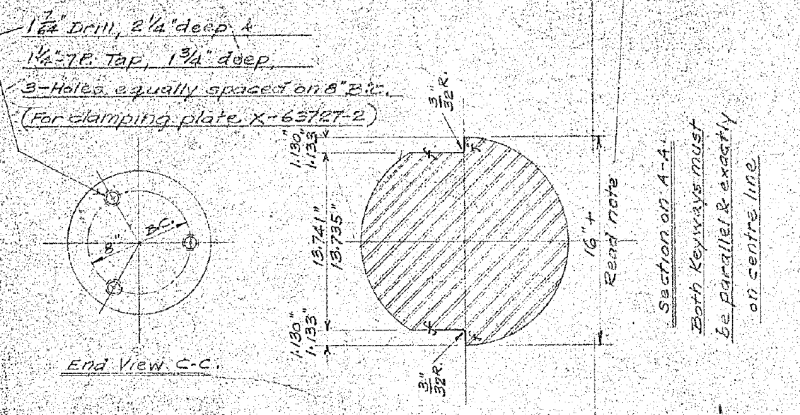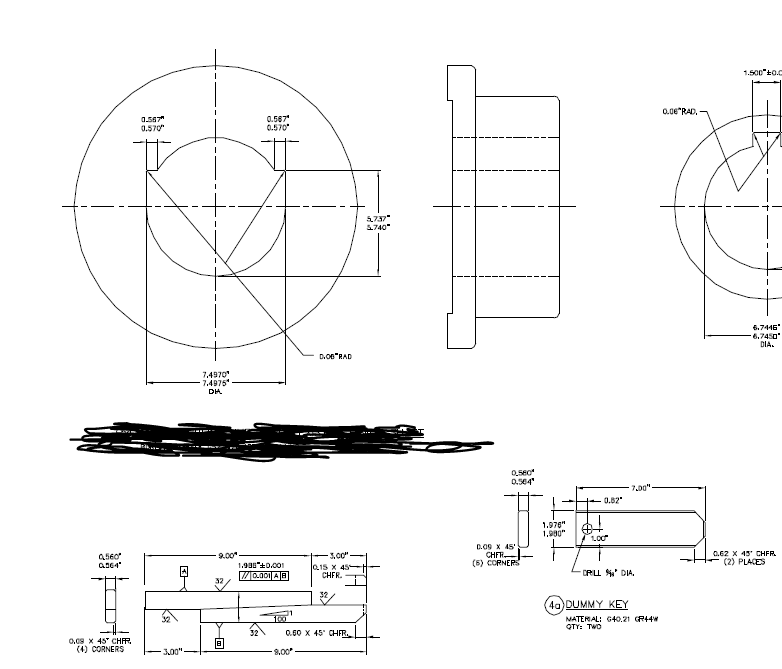MathewB_FKC
Mechanical
Guys,
I'm having a hard time identifying the type of keyway featured on this shaft. The mating hub is machined "opposite" of the shaft to accept a tapered rectangular key. I need to supply a new key for the piece of equipment but do not have an old key that I can measure nor can I find a specification that matches this particular style. I checked through various editions of the Machinery's Handbook with no luck. I thought it might be a Kennedy double key or a Peter's double key but the dimensions do not follow the standard. I'm starting to think that it's a custom design that doesn't necessarily follow a spec. Any and all help is greatly appreciated!

I'm having a hard time identifying the type of keyway featured on this shaft. The mating hub is machined "opposite" of the shaft to accept a tapered rectangular key. I need to supply a new key for the piece of equipment but do not have an old key that I can measure nor can I find a specification that matches this particular style. I checked through various editions of the Machinery's Handbook with no luck. I thought it might be a Kennedy double key or a Peter's double key but the dimensions do not follow the standard. I'm starting to think that it's a custom design that doesn't necessarily follow a spec. Any and all help is greatly appreciated!


![[2thumbsup] [2thumbsup] [2thumbsup]](/data/assets/smilies/2thumbsup.gif)
